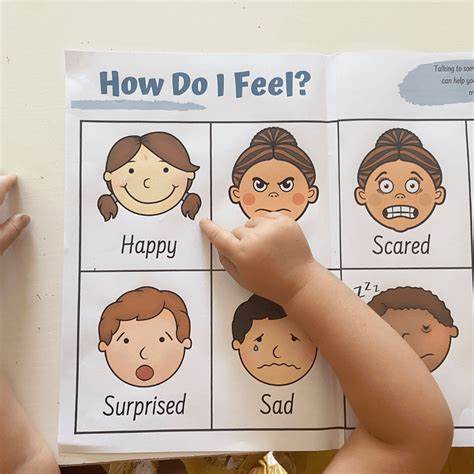Children with ADHD often feel emotions intensely but struggle to express them clearly. They might act out physically, shut down, or lash out with words—not because they don’t care, but because they don’t yet have the tools to explain what’s going on inside.
Teaching emotional vocabulary gives your child the power to pause, name what they feel, and ask for what they need—all essential skills for self-regulation and stronger relationships.
Why Emotional Vocabulary Matters for ADHD
Children with ADHD may:
- Feel emotions rapidly and intensely
- Struggle to identify or label what they feel
- Go from 0 to 100 emotionally without recognizing signs
- Be misunderstood as “rude” or “dramatic” when they’re actually overwhelmed
Giving names to feelings is the first step in managing them.
1. Start With Basic Emotion Words
Begin with simple categories:
- Happy
- Sad
- Mad
- Scared
- Excited
Use books, emojis, or expression cards to illustrate them. Visuals make abstract feelings more concrete.
2. Use an “Emotion Wheel” or Chart
Hang a chart on the wall showing a range of feelings. Refer to it during everyday moments:
- “Are you feeling frustrated or disappointed right now?”
- “Let’s check the wheel—what word fits?”
This builds emotional awareness and vocabulary simultaneously.
3. Model Your Own Feelings
Be a “feelings narrator” for your child:
- “I’m feeling overwhelmed, so I’m going to take a breath.”
- “I felt nervous this morning but now I feel proud.”
Your openness teaches them that emotions are normal and safe to talk about.
4. Read Books That Explore Emotions
Choose stories where characters deal with big feelings. After reading:
- Ask: “How do you think they felt?”
- “Have you ever felt that way?”
- “What could they have done differently?”
Books create distance and safety to explore emotions.
5. Practice Labeling in the Moment
When your child is calm, help them reflect:
- “You seemed upset earlier. Were you feeling angry or hurt?”
- “That laugh sounded like excitement—was it?”
Avoid labeling during meltdowns. Wait until they’re ready to talk.
6. Create a “Feelings Toolbox”
Help your child match emotions with coping tools:
- Mad = punch pillow or draw it out
- Sad = snuggle toy, quiet music
- Overwhelmed = fidget, deep breaths, ask for help
Linking language to actions builds self-regulation.
7. Use Games to Practice Feelings
Try charades with feelings instead of animals. Or matching games:
- Show a picture of an expression: “What word fits this?”
- Create cards with situations and ask: “How would that make you feel?”
Play makes learning feel safe and engaging.
8. Help Them Express Needs Behind Feelings
Teach sentence starters:
- “I feel ___ because ___.”
- “When I feel ___, I need ___.”
Examples:
- “I feel frustrated because I can’t find my toy. I need help.”
- “I feel left out when no one listens. I need a turn to talk.”
9. Validate First, Then Guide
Instead of: “Don’t be mad,” try:
- “I see that you’re mad. That’s okay. Let’s figure it out together.”
This shows acceptance without letting the feeling control the situation.
10. Celebrate Emotional Awareness
Praise your child when they express their feelings clearly:
- “That was so brave to say you were nervous.”
- “You told me how you felt without yelling—amazing!”
Recognizing their growth reinforces the skill.
Final Thought: Language Leads to Regulation
Giving your ADHD child the vocabulary to express their emotions turns chaos into communication. With words, they gain the ability to ask for help, to slow down before reacting, and to feel understood by others.
And when a child feels understood, they begin to understand themselves.
